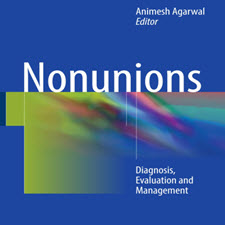Real-time railway traffic management optimization and imperfect information: preliminary studies
ABSTRACT
Railway traffic is often perturbed by unexpected events and appropriate train routing and scheduling shall be applied to minimize delay propagation. A number algorithms for this routing and scheduling problem have been proposed in the literature and they have been tested in different traffic situations. Nonetheless, their performance are almost always studied considering perfect knowledge of future traffic conditions, which is almost impossible to achieve in reality. In this paper, we propose an experimental analysis assessing the usefulness of these algorithms in case of imperfect information. We consider RECIFE-MILP as a traffic management algorithm and advanced or delayed train entrance times in the control area as the source of imperfect information. The results show that the application of traffic management optimization allows outperforming the firstcome-first-served management strategy even if the actual traffic conditions are not perfectly known by the optimization algorithm.
INTRODUCTION
When railway traffic is perturbed by unexpected events, trains experience what is called primary delay. Primary delays may propagate with a snowball effect due to the emergence of conflicts: when a train is late, it may claim a track section in concurrence with another train and one of them must then slow down, or stop, to ensure safety. In this case, one of these trains will suffer a secondary delay due to the traffic perturbation. Nowadays, operating to minimize delay propagation is the main task of railway dispatchers. They manually tackle conflicts by possibly re-scheduling trains, i.e., changing the planned train order at critical locations. Where alternative routes are available, also train routes may possibly be changed with respect to the planned ones (re-routing). A noticeable number of academic studies have been devoted to finding effective lgorithms for real-time railway traffic management . These papers deal with this scheduling and routing problem based
on different modeling choices as: the inclusion, limitation or exclusion of re-routing options; the consideration of train speed variation dynamics with different levels of simplification; the level of detail used for the infrastructure representation; the minimization of the total secondary delay, of the maximum one, or of the time to get back to the planned traffic situation.
چکیده
ترافیک راه آهن اغلب با وقایع غیر منتظره و مسیریابی قطار مناسب تحریک می شود و برنامه ریزی باید برای به حداقل رساندن انتشار تاخیر اعمال شود. الگوریتم های متعددی برای این مساله مسیریابی و برنامه ریزی در ادبیات ارائه شده اند و در شرایط ترافیکی مختلف مورد آزمایش قرار گرفته اند. با این حال، عملکرد آنها تقریبا همیشه با توجه به دانش کامل در مورد شرایط ترافیک آینده، که تقریبا غیر ممکن است در واقعیت دستیابی است، مورد مطالعه قرار گرفته است. در این مقاله، ما یک تحلیل تجربی برای ارزیابی سودمندی این الگوریتم ها در مورد اطلاعات ناقص پیشنهاد می کنیم. ما RECIFE-MILP را به عنوان یک الگوریتم مدیریت ترافیک و زمانهای ورودی قطارهای پیشرفته یا تاخیری در ناحیه کنترل به عنوان منبع اطلاعات ناقص در نظر می گیریم. نتایج نشان می دهد که استفاده از بهینه سازی مدیریت ترافیک می تواند از راهبرد مدیریت اولویت اول خدمت بهتر عمل کند حتی اگر شرایط ترافیک واقعی با الگوریتم بهینه سازی کامل شناخته نشود.
مقدمه
هنگامی که ترافیک راه آهن با وقایع غیر منتظره مزاحمت می شود، قطارها آنچه را که تاخیر اولیه نامیده می شوند، تجربه می کنند. تاخیرهای اولیه ممکن است با یک اثر گلوله برفی به علت ظهور اختلافات انتشار پیدا کنند: زمانی که یک قطار دیر می شود، ممکن است یک قطعه قطعه را در تطابق با یک قطار دیگر ادعا کند و یکی از آنها باید به منظور تضمین ایمنی، کم و یا متوقف شود. در این مورد، یکی از این قطارها به علت اختلال ترافیکی تاخیر ثانویه رنج می برد. امروزه عامل اصلی برای به حداقل رساندن انتشار تاخیر، وظیفه اصلی ناوگان راه آهن است. آنها به طور دستی با درگیری احتمالی با قطارهای مجدد برنامه ریزی شده، یعنی تغییر دستورالعمل قطار برنامه ریزی شده در نقاط بحرانی، به طور دستی حل می کنند. در جایی که مسیرهای جایگزین در دسترس هستند، مسیرهای قطار نیز ممکن است با توجه به برنامه ریزی شده (مسیر مسیریابی) تغییر یابد. تعداد قابل توجهی از مطالعات آکادمیک برای یافتن لگاریتم های موثر برای مدیریت ترافیک در زمان واقعی اختصاص داده شده است. این مقالات با این برنامه ریزی و مسیریابی مبتنی بر معامله می شود در انتخاب مدل های مختلف به عنوان: گنجاندن، محدود کردن یا رد گزینه های دوباره مسیریابی؛ توجه به دینامیک تغییر سرعت قطار با سطوح مختلف ساده سازی؛ سطح جزئیات مورد استفاده برای نمایش زیرساخت؛ به حداقل رساندن کل تاخیر ثانویه، حداکثر یک یا زمان بازگشت به وضعیت ترافیکی برنامه ریزی شده.
Year: 2015
Publisher : ELSEVIER
By : Paola Pellegrini , Gregory Marli ´ ere and Joaquin Rodriguez
File Information: Persian Language/ 6 Page / size: 113 KB
سال : 1394
ناشر : ELSEVIER
کاری از : Paola Pellegrini، Gregory Marli ‘ere و Joaquin Rodriguez
اطلاعات فایل : زبان فارسی / 6 صفحه / حجم : KB 113


![Real-time railway traffic management optimization[taliem.ir]](https://taliem.ir/wp-content/uploads/Real-time-railway-traffic-management-optimizationtaliem.ir_.jpg)
![Primary.Immunodeficiency.Diseases.Definition.Diagnosis.[taliem.ir] Primary.Immunodeficiency.Diseases.Definition.Diagnosis.[taliem.ir]](https://taliem.ir/wp-content/uploads/Primary.Immunodeficiency.Diseases.Definition.Diagnosis.taliem.ir_.jpg)
![Techno-economic valuation and optimization[taliem.ir] Techno-economic valuation and optimization[taliem.ir]](https://taliem.ir/wp-content/uploads/Techno-economic-valuation-and-optimizationtaliem.ir_.jpg)
![Knowledge Workers and the Principle of 3S (Self-management, Selforganization, Self-control)[taliem.ir] Knowledge Workers and the Principle of 3S (Self-management, Selforganization, Self-control)[taliem.ir]](https://taliem.ir/wp-content/uploads/Knowledge-Workers-and-the-Principle-of-3S-Self-management-Selforganization-Self-controltaliem.ir_.jpg)

![Dividend Policy from the Signaling Perspective and its Effects on[taliem.ir] Dividend Policy from the Signaling Perspective and its Effects on[taliem.ir]](https://taliem.ir/wp-content/uploads/Dividend-Policy-from-the-Signaling-Perspective-and-its-Effects-ontaliem.ir_.jpg)
![The relation between earnings management and financial statement fraud[taliem.ir] The relation between earnings management and financial statement fraud[taliem.ir]](https://taliem.ir/wp-content/uploads/The-relation-between-earnings-management-and-financial-statement-fraudtaliem.ir_-1.jpg)
![Enhancing the Governance of Government Linked Companies via[taliem.ir] Enhancing the Governance of Government Linked Companies via[taliem.ir]](https://taliem.ir/wp-content/uploads/Enhancing-the-Governance-of-Government-Linked-Companies-viataliem.ir_.jpg)


![Sixth generation innovation model description of a success model[taliem.ir]](https://taliem.ir/wp-content/uploads/Sixth-generation-innovation-model-description-of-a-success-modeltaliem.ir_-150x150.jpg)
![Supply chain management[taliem.ir]](https://taliem.ir/wp-content/uploads/Supply-chain-managementtaliem.ir_-150x150.jpg)
دیدگاه خود را ثبت کنید
تمایل دارید در گفتگو شرکت کنید؟نظری بدهید!